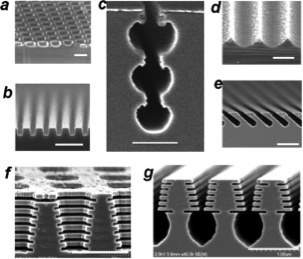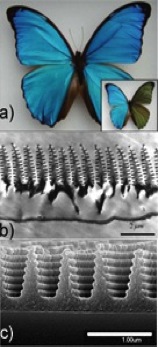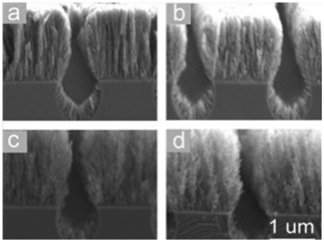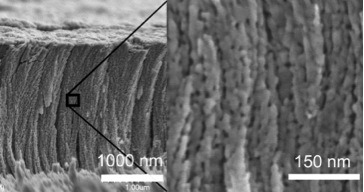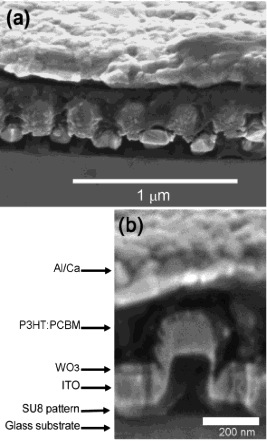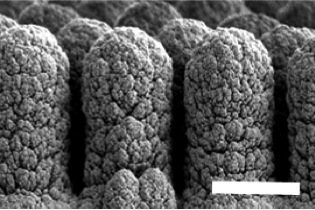Focus
Our research group's interest focuses at the intersection between electromagnetic radiation and nanostructured materials. Beyond its well established footprint in telecommunications, the physics of light manipulation and control with/within nanoscale materials is nowadays a rendezvous point for solar energy harvesting, chemical sensors, and photonic structures with a variety of applications. Below you may find a list of our projects:





Bio-inspired color-tunable systems (2012-Present)
Tremendous progress has been made in display devices and virtual reality methods over the years, yet the primary representation remains “through the window”—we look, feel, or move using a computer interface that acts as a portal into a simulated world. Even with the best projection systems light emitting devices offer very limited simulations of the real world. There is a real need to explore novel material concepts in texture and color control to create physical manifestations of virtual objects. The major challenge for this revolution is the need of a new type of pixel that can change color and texture in a flexible substrate. Natural masterpieces such as the cuttlefish’s color- and texture-changing abilities prove that such technology is essentially possible, and that it is up to us to learn from nature’s blueprints. To that end we propose to comprehensively address the full opto-mechanical requirements to build structurally active designs to enable efficient color and texture surface control.
Materials/Photoanode for dye sensitized photoelectrochemical cells (DSPECs) (2009-Present)
Concerns about future limitations of the availability of hydrocarbons and the already ongoing global greenhouse problem continue to encourage the development of hydrogen as a carrier and storage medium of energy. In dye sensitized photoelectrochemical cell (DSPEC) applications, semiconductor requirements include high surface areas for adequate assembly loading, good transport properties (long carrier lifetimes relative to recombination), and a suitable energy band structure for promoting electron or hole injection for the latter, at potentials sufficient to drive hydrogen reduction at the counter electrode. We have developed a new pulsed laser deposition (PLD) method to fabricate candidate oxide photoanodes with a hierarchical and preferentially vertical arrangement. Given the nature of the fabrication process, morphology is largely independent of material and we have successfully applied PLD to the fabrication of high-potential conduction band oxides such as Nb2O5, SrTiO3 and Ta2O5. This is work that continues under the umbrella of the UNC-Energy Frontier Research Center.
Photonic Nanostructure of in Solar Cells (2007-Present)
Sunlight is the most abundant and sustainable source of energy available. However exploiting its concentrated fossil fuel forms has negative environmental and geopolitical consequences. Despite these known facts, societies do not price correctly the use of non-renewable fuel deposits, appearing the “cheapest” way to supply the world with energy. Despite this uphill situation, an economic upheaval in direct solar energy conversion technology seems possible. A technology can only have a chance of being disrupting if its costs are lower than that of comparable silicon cells and performs with commercial module photon conversion efficiencies (PCE) > 15 % (~20 % in laboratory). We advocate that sustainable energy research cannot be blind to these realities.
Clearly abundant and low cost materials are the only ones with a chance to surpass silicon’s cost trajectory. This is why we are committed to bet on alternative systems: namely organic, hybrid, and quantum dot solar cells. The key adversative problem –light absorption vs. carrier transport–, present in all types alternative photovoltaic materials is for most part being addressed on by improving the intrinsic characteristic of PV-active materials. As has been proven by Bulk Heterojunction devices the problem is surmountable by separating the absorption and transport issues and the key lies in identifying the correct length scales that need to be addressed... Keep reading here
Yingchi's defense
June 13, 2013
Yingchi Lui is preparing for his final PhD thesis defense to be held this June 13.
New website!
April 26, 2013
We are pleased to announce a brand new website custom designed to help publicize our research, improve our recruiting efforts, and increase group cohesion. Our very own Travis Hairfield spent two months building the new site from the ground up. As the website is so new, there may be bugs left in it. If you find one, help us out and send a quick message at the "Feedback" link at the bottom of the page.
- Ok, Ghosh, Brennaman, Lopez, Meyer, Samulski. Surface patterning of mesoporous niobium oxide films for solar energy conversion.. ACS applied materials & interfaces 5, 3469-74, (2013). http://dx.doi.org/10.1021...
- Alibabaei, Luo, House, Hoertz, Lopez, Meyer. Applications of metal oxide materials in dye sensitized photoelectrosynthesis cells for making solar fuels: let the molecules do the work. Journal of Materials Chemistry A 1, 4133, (2013). http://pubs.rsc.org/en/co...
- Liu, Kirsch, Gadisa, Aryal, Mitran, Samulski, Lopez. Effects of nano-patterned versus simple flat active layers in upright organic photovoltaic devices. Journal of Physics D: Applied Physics 46, 024008, (2013). http://stacks.iop.org/002...
- Lundgren, Lopez, Redwing, Melde. FDTD modeling of solar energy absorption in silicon branched nanowires. Optics Express 21, A392, (2013). http://www.opticsexpress....
